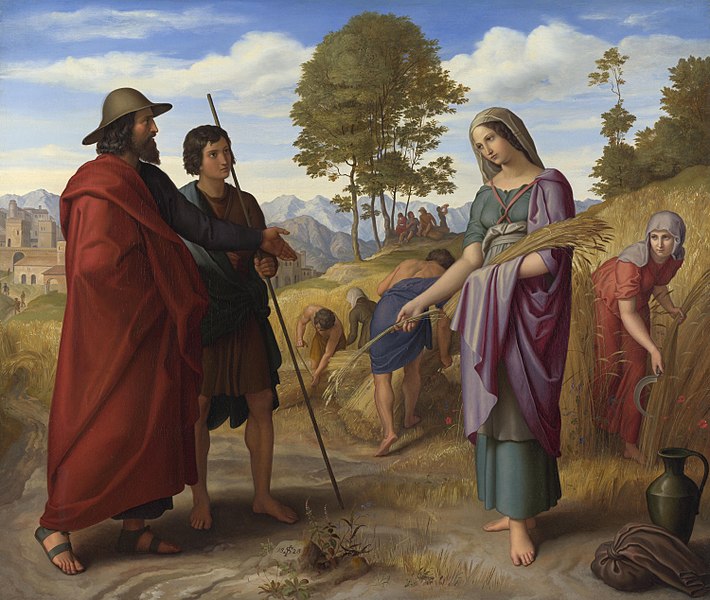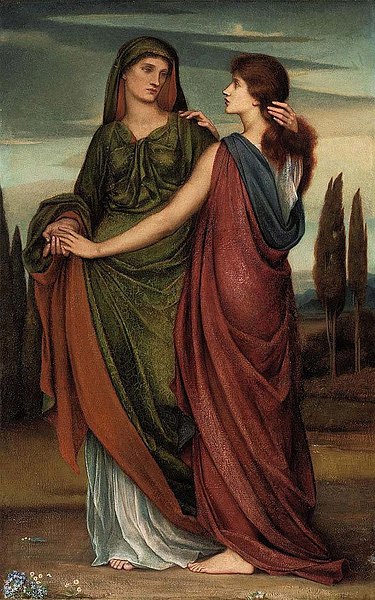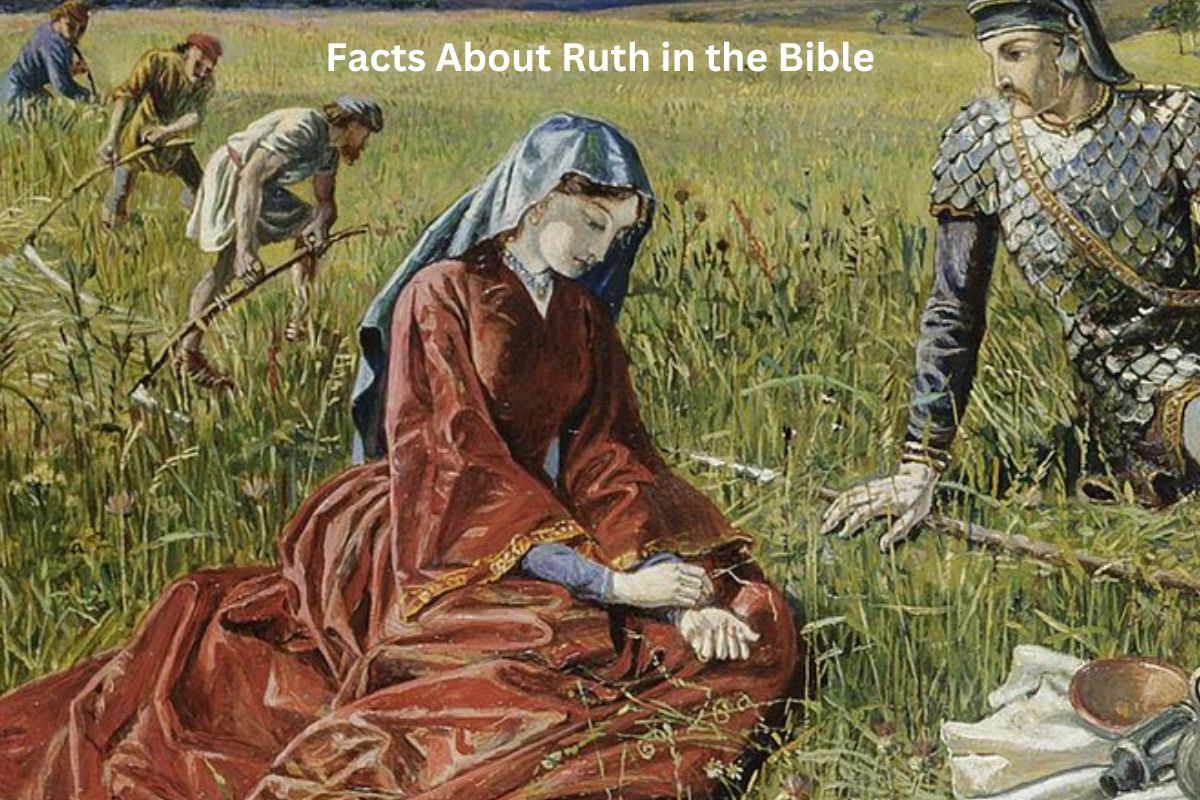Ruth, a prominent figure in the Bible, is celebrated for her unwavering loyalty, faith, and virtuous character. As a Moabite woman who married into an Israelite family, her journey from widowhood in Moab to becoming an ancestor of King David and Jesus Christ in Bethlehem is a tale of devotion and divine providence.
Her profound declaration of loyalty to her mother-in-law Naomi and her eventual marriage to Boaz are key moments in her story.
The Book of Ruth, a brief but impactful book in the Bible, immortalizes her remarkable narrative, highlighting themes of faithfulness and God’s intricate plan for ordinary individuals.
Ruth in the Bible Facts
1. Ruth was a Moabite woman
Ruth’s origins lie in the land of Moab, which was situated to the east of the Jordan River. The Moabites were not Israelites; they were a neighboring people.
Also Read: Facts About Ezra in the Bible
Ruth’s Moabite background is significant in the biblical narrative because, traditionally, Moabites were not considered part of the chosen people of God, but her story illustrates how her faith and character transcend her nationality.

2. She married Mahlon, an Israelite
Ruth married Mahlon, one of the two sons of Naomi and Elimelech, who were Israelites from Bethlehem.
Naomi’s family had moved to Moab due to a famine in Bethlehem, and it was there that Mahlon and Ruth met and married.
Also Read: Esther in the Bible Facts
This intermarriage between an Israelite and a Moabite was not uncommon in ancient times but carried cultural and religious significance.
3. She was widowed along with her mother-in-law, Naomi
Tragedy struck when Mahlon, Ruth’s husband, died, leaving Ruth a widow. Shortly after, Mahlon’s brother Chilion also died, leaving his wife Orpah widowed.
This left three widows in the family: Naomi, Ruth, and Orpah, and it was a difficult situation in a society where a woman’s security and social standing were often closely tied to her husband and family.
This set the stage for Ruth’s eventual journey with Naomi back to Bethlehem, a pivotal event in her story.
4. Ruth famously declared her loyalty to Naomi
Ruth’s famous declaration of loyalty is found in Ruth 1:16-17. When Naomi decided to return to her homeland of Bethlehem after the deaths of their husbands, she encouraged both Ruth and Orpah to return to their families in Moab.
However, Ruth’s response is a testament to her deep loyalty and faith. She said, “Where you go I will go, and where you stay I will stay. Your people will be my people and your God my God.”
This profound commitment to her mother-in-law demonstrated Ruth’s unwavering devotion and her willingness to adopt the faith and culture of the Israelites.
5. She returned with Naomi to Bethlehem
Inspired by Ruth’s loyalty and determination, Naomi and Ruth set out on a journey to Bethlehem. This journey was not an easy one, as they were two widowed women without much means of support. It marked the beginning of Ruth’s new life among the Israelites, and it became a pivotal point in her story.

6. Ruth supported herself and Naomi by gleaning in fields
In Bethlehem, Ruth and Naomi had to find a way to support themselves. Ruth began gleaning in the fields, a practice allowed in the Israelite culture.
Gleaning involved picking up the leftover grain after the harvesters had gone through the fields. It was a way for the poor and needy to gather food, and it is an important aspect of Ruth’s story because it led to her crossing paths with Boaz, a wealthy relative of Elimelech, Naomi’s deceased husband. Boaz’s kindness and favor towards Ruth would play a significant role in the unfolding of her story.
7. Boaz, a relative of Naomi, showed kindness to her
As Ruth continued to glean in the fields, she found herself in the fields of Boaz, a relative of her late father-in-law, Elimelech.
Boaz noticed her diligence and kindness towards Naomi and was impressed by her character. He showed kindness to Ruth by instructing his workers to leave extra grain for her to gather. This act of generosity and care indicated Boaz’s interest in Ruth.
8. Ruth and Boaz eventually married
Over time, a romantic relationship developed between Ruth and Boaz. Ruth’s reputation for her virtuous character played a significant role in Boaz’s decision to marry her. However, there was a legal aspect to their relationship.
Boaz was also a kinsman-redeemer, which meant he had the responsibility and the right to redeem the property and marry the widow of a close relative to continue the family line.
Boaz fulfilled this role by marrying Ruth. Their marriage is celebrated in the Bible and marked a turning point in Ruth’s life.
9. They became ancestors of King David and Jesus
Ruth’s marriage to Boaz had profound implications for the biblical narrative. Their son, Obed, was born to them, and Obed became the father of Jesse, who in turn was the father of King David.
This lineage is significant because it connects Ruth to one of the most prominent figures in the Bible, King David.
Furthermore, Ruth’s genealogy is traced in the New Testament, in the Gospel of Matthew (Matthew 1:5), as she is listed as one of the ancestors of Jesus Christ, making her a part of the Messianic lineage.
10. Ruth’s story is recorded in the Book of Ruth in the Bible
The story of Ruth is recorded in the Old Testament Book of Ruth, which is a short but impactful book. It consists of only four chapters but carries deep spiritual and moral lessons.
The Book of Ruth is often considered one of the most beautiful narratives in the Bible, emphasizing themes such as loyalty, faithfulness, providence, and the inclusion of outsiders into God’s plan. It serves as a reminder of how God can work through ordinary individuals like Ruth to accomplish His divine purposes in the world.
